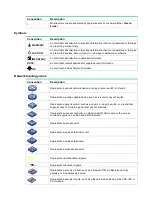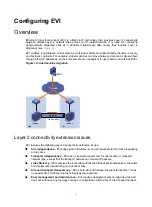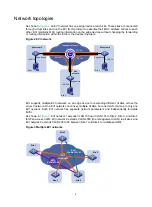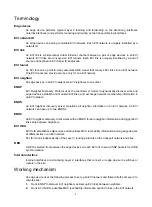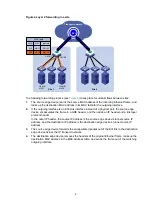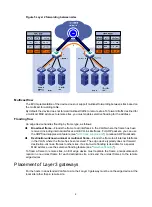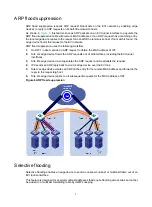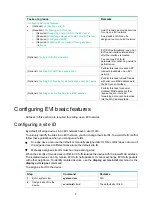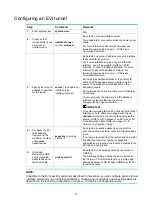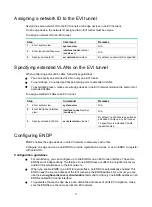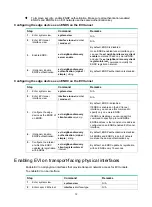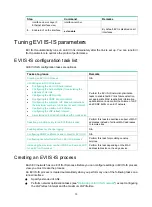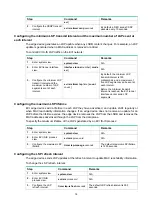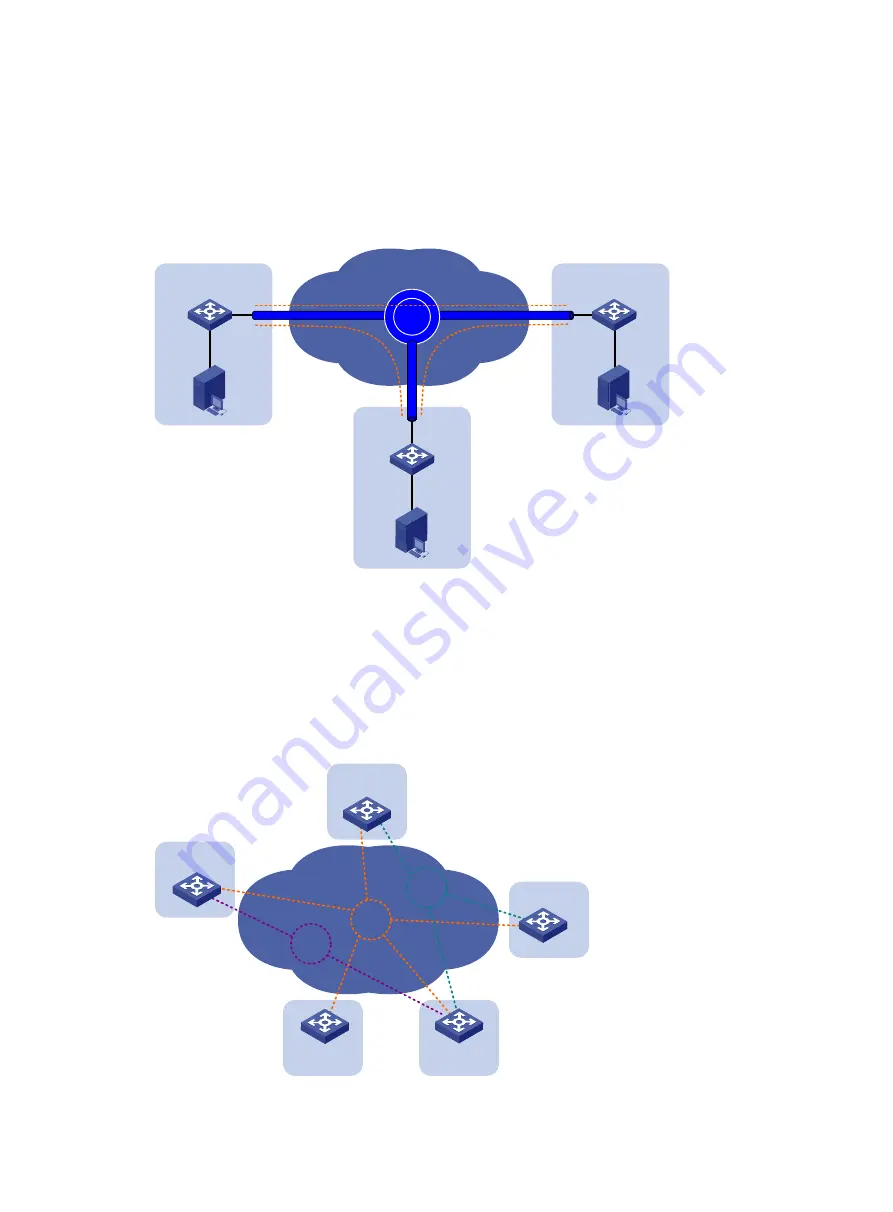
2
Network topologies
As shown in
, an EVI network has one edge device at each site. These sites are connected
through virtual links and run the EVI IS-IS protocol to advertise their MAC address entries to each
other. EVI maintains MAC routing information on the edge devices without changing the forwarding
or routing information within the sites or the transport network.
Figure 2 EVI network
EVI supports multiple EVI networks on an edge device for extending different VLANs across the
Layer 3 network. One EVI network can convey multiple VLANs, but one VLAN can map to only one
EVI network. Each EVI network has separate network parameters and independently forwards
traffic.
As shown in
, EVI network 1 extends VLAN 100 and VLAN 101 to Site 2, Site 3, and Site 4
for Web access traffic. EVI network 2 extends VLAN 4000 (the management VLAN) to all sites, and
EVI network 3 extends VLANs 50 to 80 between Site 1 and Site 4 for database traffic.
Figure 3 Multiple EVI networks
Transport network
Site network
Edge device
EVI link
EVI
Site network
Edge device
Site
network
Edge device
EVI link
EVI link
VLAN 10
VLAN 10
VLAN 10
Site 1
Site 2
Site 3
Site 1
Site 2
Site 4
Site 5
EVI 1
VLANs 100-101
EVI 2
VLAN 4000
EVI 3
VLANs 50-80
Site 3




